Whump And Its Role Outside of Fandom
Imagine liking a character so much you’d want nothing more than to see them tied up in a darkened basement and beaten bloody just so they can recover again. Seems odd, right? In any case, welcome to the complicated and somewhat contradictory world of whump.
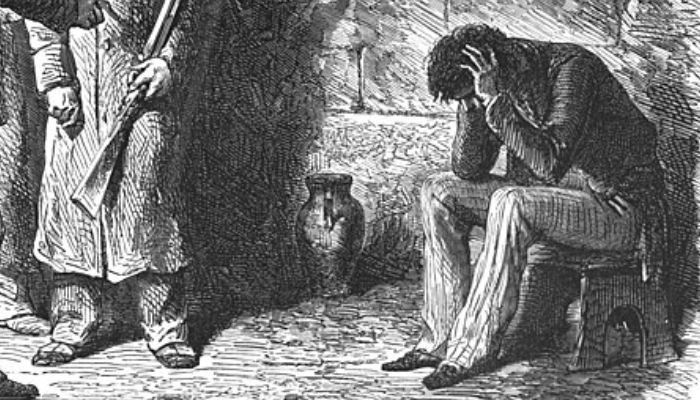
Simply, whump is both a subgenre of fanfiction as well as a plot device that involves a character being physically or psychologically put through the wringer. Fans of whump—whumpers—engage with it for a variety of reasons (as will be later explored), but come under criticism most often due to the sexually-charged rumours that surround the fanbase and, by extension, whump itself. The rumours are not completely unfounded, as some fans pursue whump for the physical sensations and/or sexual gratification they get from it; but this is not all it has to offer. The labelling of whump as ‘taboo’ is problematic both for the amount of sensationalist rumours which surround the genre and for the marginalization of the fanbase—even if, at first glance, the criticism seems warranted. But before we get into that, let’s begin with a crash course:
Whump, Whumper, Woobie and Other Gibberish
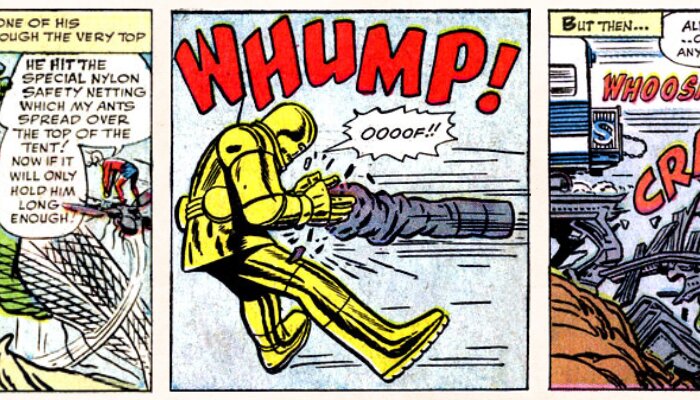
What is whump? First and foremost, it is a fandom-born phenomenon originating from fan movements as early as the 1970s with the emergence of “Get ‘em” zines—fan-made pamphlets primarily within the Star Trek fandom (haich slash cee); modern whump “involves taking a canon [(present in the original material)] character, and placing them in physically painful or psychologically-damaging scenarios. Often this character is a fan favourite and may sometimes be referred to as a woobie” (“Whump”). The term is used both to describe ‘whump’ present in the original material as well as in fanfics.
The history of whump has been recorded extensively in articles that explore its relationship with fans as well as its evolution. So, as not to paraphrase what has already been said quite well, if this aspect interests you, feel free to take a peek at “The Pain Fandom” by Maria Temming or “Hurt/Comfort and Whump in Fandom Discourse: A Timeline (1970′s – 2020,” by haich slash cee, which offer in-depth research into the history and reach of whump from retro to present.
Whump’s Criticism
Whump is seldom discussed without first or simultaneously addressing the overwhelming criticism it faces, which heightens its notoriety. Nevertheless, so much controversy creates an allure that leads non-fans to ask: “What’s all the fuss about?” The ‘fuss’ in question usually has to do with the satisfaction, sexual gratification or hard-to-describe fluttering feeling often referred to as ‘whumperflies,’ some fans claim to experience when they read whump. Rather being used to dismiss and judge the written material, the criticism is turned on the fans themselves, which makes it feel much more like a personal attack.
The personal flavour of this criticism is only emphasized when fans of other ‘guilty pleasures’ like harlequin novels or political thrillers face a fraction of the same. But the criticism doesn’t always come from normies; it comes just as freely from within fandoms and other reading spheres. One Tumblr user, Alipeeps, describes her experience: “It somehow felt like something that shouldn’t be discussed, that is not acknowledged, that people would consider weird.” Were this comment taken out of context, it’s not hard to see why many fans compare the discussion of whump to that of a kink, despite the fact that whump is rarely sexual itself, commonly being housed in ‘gen’ fics (general—non-romantic or sexual fanfiction). But as is true for much of kink culture, the object of a kink can begin with something entirely non-sexual until a shift in perspective changes that (consider how pop culture has altered our view of maid or school girl outfits). Some examples of common whump tropes include being imprisoned, held captive, or tied up; self-sacrifice that ends with a severe injury or death; facing a character or situation that resurfaces trauma; and good ol’ bludgeoning, stabbing, or maiming.
Whump is built upon physical pain and high emotions, and what often sends widely accepted sex practices into kink territory is that addition of more than just mutual pleasure, whether that be roleplay, praise/humiliation, impact play, etc. So even though whump is by no means a kink in the (ironically enough) ‘normal’ sense of the word, with the addition of that physical reaction from the reader, it’s easy to see where it gets its connotation. And to be clear, the issue is not in whump’s sexual or unsexual nature, it’s the fact that 1) the word and both its uses have taken on a sexual connotation, and 2) that part is what is largely being criticized.
However, not all fans are in it for the whumperflies—and are thus not only unfairly but incorrectly criticized. Tumblr user Fififolle defends whump by putting it in the context of effective prose:
I feel it is acceptable to enjoy stories where fictional characters are injured because it does provide such an opportunity for triumph over adversity […] Surely fiction would be far less interesting without it? Patching up wounds and soothing fevered brows is the stuff of good drama.
(“Mini-Meta”)
And they are not alone in their thinking; Chera Kee in her article, “Poe Dameron Hurts So Prettily: How Fandom Negotiates with Transmedia Characterization” quotes @sparxflame who notes, “When men in fiction do get hurt, they largely bounce back from it, action-hero style.” Were this the widely propagated view of whumpers among non-fans, it’s quite possible that it would not be as heavily criticized as it is. But the problem does not lie in the fact that whump and its fans face criticism so much as why—which denotes a much larger issue, especially considering whump’s ubiquity.
Whump and TV
Whump gets most of its exposure through TV shows, which have narrative arcs for every episode and much more opportunity for whump than in a novel. Thus, unsurprisingly, the Whumpapedia—it’s exactly what you think—is largely dominated by instances of whump taken from TV shows. Books, movies, anime, comics and video games take a backseat in terms of sheer numbers of entries. In addition to the larger number of whump examples, TV might dominate the scene simply because it is the more popular medium and, many would say, easier to consume, or it might be because there are fewer standalone books and movies that are mainstream in the same capacity or have such established fanbases. Criminal Minds, Grey’s Anatomy, Supernatural, Stranger Things, and The Handmaid’s Tale are only a few of the extensive list of shows featuring commonly whumped characters.
However, shows like The Handmaid’s Tale that are inspired by novels prompt an interesting question: Why feature canons from the show rather than the book? Now, as was mentioned above, this could be chalked up to the simple fact that the kids aren’t reading these days, but The Handmaid’s Tale stands out. To say The Handmaid’s Tale is free of violence would be a gross fib, but one could say it is free of the sort of violence that would be attractive to whumpers. There is a substantial emphasis on male whump due to societal sensitivities concerning violence against women, that would only be emphasized with the sexualization of such violence. Thus, it is not so surprising that the only whumpee listed on the Whumpapedia is Luke, Offred’s husband, a character who takes a backseat in the novel. So, as the novel has a cast 99% made up of women, viewers get something more tangible to latch onto in the show. A commonly referenced scene is in season 5’s episode 6 entitled “Together” where Luke is “captured and beaten” before being dragged back to his cell, “bleeding and barely conscious” (Cabral).
Yet, Catch-22, an absurdist war novel written in 1961, was also remade into a mini-series, and the featured whumpee—Snowden—is given about the same amount of attention in both. Therefore, it would seem that in addition to the speculation raised above, there could be a certain visual factor that activates people’s fascination or delight—a factor that would be incapable of existing in the basic novel.

Whump as an Entirely Un-Risqué Plot Element
But, if there are so many instances of whump in canon, it would be inaccurate to then say that whump can only exist within fanfiction. Careful consideration of whump’s common conventions and attributes makes it clear that rather than a genre, whump possesses more similarities to a trope or plot element. Much like ‘Enemies to Lovers,’ whump follows a predictable formula: injury, suffering/healing, return to the real world or death. So when whump is discussed, it is this specific plot sequence being debated rather than a genre categorized by an overcoming/succumbing to adversity theme.
However, this doesn’t mean it’s completely impossible for whump to evolve into its own genre. On the anime and manga scene, age demographics like ‘Shoujo’ (young girls) or ‘Shounen’ (young boys) are becoming increasingly synonymous with various tropes generally appealing to each age group. And in the West, more and more elevator pitches are being adapted to include buzzwords like ‘Mistaken Identity’ or ‘Love Triangle.’ With the rise of modern literary fads—partly due to online communities like ‘Booktok’ (TikTok’s book community)—authors are desperately remixing genres and tropes in hopes of creating something unique. So it is not so preposterous to suggest a potential trend based on the devising of an entire story around one section of the typical novel structure.
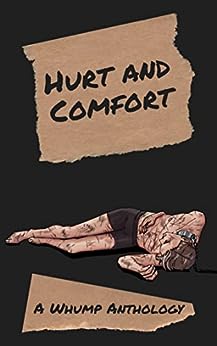
In any case, a standalone genre is what many whumpers anticipate as OC (original character) whump becomes increasingly popular. September of 2022 saw the publication of the collection Hurt and Comfort: A Whump Anthology by Kailey Alessi, which featured over two dozen whump stories by various authors. Additionally, Maria Temming writes in her article, “A pair of authors recently teamed up to edit and self-publish an anthology of original whump stories, and at least one author has argued that whump should be recognized as a genre in mainstream publishing.” The numbers don’t seem especially promising but with social media as a driving force, it would only take a slight change in image for emerging authors to shoot whump into the mainstream with carbon copy stories in different fonts.
If these stories were to come to exist, the question then remains as to how they would be marketed. No one would argue that a lighthearted romance and a supernatural romance are both subgenres of romance, but there is room for significant debate concerning whump’s roots. Action, thriller, drama… from Star Wars to Good Omens to My Hero Academia to Modern Family, whump travels between genres because, while possessing a similar layout to many tropes, it doesn’t possess the same exclusivity that ‘Love Triangle’ has with the romance genre or ‘Last Girl’ has with horror. Whump also exists as a plot element no different from the climax or rising action. It is this specific universality that makes it so that even if whump emerges as a genre, it would lack many of the other elements needed for a complete and resolved plot structure. So, if whump were extended without the additional elements, it would potentially leave the reader dissatisfied; and if additional elements were included, it would likely fall under an already-established genre.
Handing it Over to Christopher Booker
In Christopher Booker’s The Seven Basic Plots: Why We Tell Stories, he lays out plots and their variations (you’ll never guess how many) that can be seen over hundreds, perhaps thousands of stories, including whump—though not under that name. He first notes in his “Introduction and Historical Notes,” “[o]bviously it was not true that every story fits neatly and with mechanical regularity into one or another category of plot: otherwise we should all have noticed the fact long ago, and stories would scarcely be the endlessly varied and fascinating things that they are” (14). Booker acknowledges that his seven basic plots are not the be-all end-all of structural categorization, later differentiating stories that adhere to these structures from those that don’t: “there are others, a great many, which show the story somehow ‘going wrong’, in terms of failing fully to realise the basic plot which lies behind it” (Booker 15). In the various categories he describes, whump finds itself under “stories which are shaped only by part of such a plot” (14), which is how whump can exist both separately and in its larger context.
Whump most often develops in the ‘Overcoming the Monster’ plot. Although essentially any plot, basic or not, will reveal a ‘darkest point’—also called the ‘lowest point’ or the ‘crisis’—when the main character seems defeated, there are few that manifest in quite the same way as whump does in Overcoming the Monster. For example, ‘the Quest,’ according to Booker, contains what he calls, “Arrival and Frustration” (83), where the hero is about to get what they want but is required to complete more tasks beforehand. In an example using Babar and Father Christmas, he illustrates the Arrival and Frustration stage:
Babar and the dog dig a hole in the snow for shelter, but they are so cold and tired that they are on the verge of giving up hope – when they have a ‘thrilling escape from death’. The snow gives way under them, and they fall into a huge, brightly-lit underground cavern, a treasure house of toys, where they are warmly welcomed by the twinkling and venerable Father Christmas himself.
(Booker 84)
Rather than the impossibility for whump to exist in this archetype lying in the hero’s inevitable recovery, it instead lies in the fact that the ‘recovery’ is brought about by an external source. Whump focuses very much on the inner turmoil and human connections created by heightened stress and the encounter of physical limitations. However, a ‘Hurt Without Comfort’ fic where the hero is hurt yet succumbs by the end would be equally impossible because the hero would be incapable of completing their remaining “Final Ordeals” and “Goal” (Booker 83). Even in Booker’s ‘Dark Quest,’ such as Moby Dick, where the hero is slain by the end, Captain Ahab still arrives at the Goal rather than being eighty-sixed by the Arrival and Frustration stage.
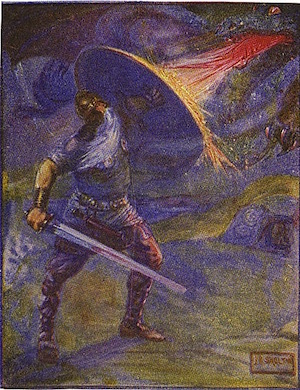
The Overcoming the Monster hero is completely justified in going after whatever Big Bad has made the huge mistake of messing with their day-to-day life. The hero eventually confronts it and stands at such staggering odds that it seems there is no hope of victory. There is then a staggering reversal and the hero wins the day (Booker 23). Some examples of Overcoming the Monster are: Stars Wars – A New Hope, Beowulf, and Jack and the Beanstalk. Overcoming the Monster sees not only the typical ‘action hero’ type protagonist but feeds off that archetype to amplify the effect of what Booker calls the “Nightmare Stage” (48). It is housed just before ‘the final ordeal’ where the hero vanquishes his monster. The hero needs to recover in order to slay the monster—an event that defines the archetype. In fact, Booker highlights the importance of the Nightmare Stage under a heading that reads “Constriction and release”:
So powerful is the effect on us of one element in this plot — the growing sense of nightmare as the hero seems to be slipping into the monster’s power, followed by the surge of relief at his thrilling escape from death — that a whole sub-group of tales has grown up which use just this element in the story to make a plot in itself.
(Booker 49)
In addition to most basic adventures, this description fits ‘Hurt With Comfort’ fics quite well—the whump stories that don’t leave the hero to suffer alone but let him overcome his infliction either by himself or by the sides of his companions.
Speaking of constriction, what about the whump where the hero is constricted so tightly that his little head pops right off and he never defeats his monster? In his chapter, “The Dark Power: From Shadow into Light,” Booker breaks down the tragic antitheses to his seven basic plots. When discussing Overcoming the Monster, Booker says the following about what readers anticipate from the plot in terms of the hero’s development:
[F]rom the moment we first see them in their initial lowly, disregarded state, we know the one thing essential to bringing the story to a satisfactory resolution will be to see them finally emerging from obscurity into the light, where their true hidden self will finally become obvious for everyone to see.
(Booker 220)
Booker explains that heroes who become intertwined with darkness must die to restore the reader’s inner sense of the happy ending, because the light wins a victory for ‘life’ (219).
Whump thrives off of action hero types being forced to reveal their flaws or fight against their inner darkness. Even whump that deals with ‘cinnamon rolls’ (soft and cutesy characters) or comic relief characters exist almost exclusively for the moment the facade is dropped. For whump to scratch a particular itch for the reader, if the main character dies, it should always be due to a fatal flaw or darkness; if the main character dies not due to a fatal flaw but instead for the development of another, these plots are then inapplicable because it means the focus character of the whump wasn’t the main character and the story was probably told from a peripheral perspective.
In Summary and in Addition
So, if whump is so common, why the ‘read with caution’ label? Well, the taboo that exists around whump is largely due to the medium with which it is propagated. Unlike harlequin or dark fantasy or horror novels, which can contain many of the same topics like excessive violence and sexuality, but have gone through the publication process, whump stands against no such critics. Anyone who likes it is able to write it. There are community moderators, but the fact that whump is such a prolific genre shows that it isn’t suppressed, at least en masse. So one theory is that the taboo partly stems from the idea that ‘anything you can find on the internet is worse than what you can find in print.’ Or that the internet is a cesspool of horrible, disgusting things and whump is one of them.
But while on the topic of whump and unfairly psycho-analyzing anyone who enjoys it, it feels wrong not to acknowledge other genres that are entirely acceptable but pose, if not similar, then greater issues. There’s a circumstantial sensitivity in today’s audiences that restricts what can safely appear in mainstream media. Recently, there has been a surge of ‘based on a true story’ series and movies that exist in a genre just a little more cinematic than documentaries. The problem lies not with biographical fiction as a whole but with what stories writers are choosing to investigate and portray, particularly within true crime.
The 2022 Netflix series, Dahmer, was met with a huge amount of backlash. Even though many viewers stood with the murder victims’ families as they spoke out against the show, Dahmer is still able to be streamed on Netflix. “‘We’re all one traumatic event away from the worst day of your life being reduced to your neighbor’s favorite binge show,’ Eric Perry, whose cousin Errol Lindsey was killed by Dahmer in 1991, told the Los Angeles Times in September” (Peay). Although the series does try to portray these events in a way true to the events’ horrifying nature, the message taken away lies entirely in the hands of the viewers. Shows along the same lines that have taken fewer steps towards sensitivity represent much larger issues, especially considering the now stereotypical image of a suburban mother with a glass of wine, sitting on the couch while some altogether indifferent narrator with a voice like honey describes just which parts of the victim’s bodies were cut off.

Yet, it would seem desensitization and a morbid fascination are the worst to come of the genre. So, this isn’t meant to be a total condemnation of the genre so much as a side-by-side comparison, demonstrating how real violence and serial killers can be glorified in mainstream media with its fans openly sharing their latest true crime binge, while a group of fans who enjoy fictional violence are condemned on an entirely separate level.
Works Cited
Alipeeps. “Mini-Meta : Whump – Why do we like it?” Internet Archive. 2008,
web.archive.org/web/20170720200133/https://alipeeps.livejournal.com/77331.html.
Booker, Christopher. The Seven Basic Plots: Why We Tell Stories. Continuum Books, 2004.
Cabral, Matt. “The Handmaid’s Tale recap: Surprise escapes, a shocking execution, andunexpected pregnancies.” Entertainment Weekly. 2022, ew.com/tv/recaps/the-handmaids-tale-season-5-episode-6.
haich slash cee. “Hurt/Comfort and Whump in Fandom Discourse: A Timeline (1970′s – 2020).” Tumblr. 2020, haich-slash-cee.tumblr.com/post/189543273406/hurtcomfort-and-whump-in-fandom-discourse-a.
Kee, Chera. “Poe Dameron Hurts So Prettily: How Fandom Negotiates with Transmedia Characterization.” NANO. 2017, nanocrit.com/issues/issue12/Poe-Dameron-Hurts-So-Prettily-How-Fandom-Negotiates-with-Transmedia-Characterization.
Peay, Malik. “Critics of Netflix’s controversial ‘Dahmer’ open up about lack of ‘respect’ they felt.” Los Angeles Times. 2022, www.latimes.com/entertainment-arts/tv/story/2022-09-30/netflix-monster-jeffrey-dahmer-story-controversy-victims-eric-perry-rita-isbell.
Temming, Maria. “The Pain Fandom.” Fansplaining. 2023, www.fansplaining.com/articles/the-pain-fandom.
“Whump.” Fanlore. 2008, revised July 2023, fanlore.org/wiki/Whump.
What do you think? Leave a comment.








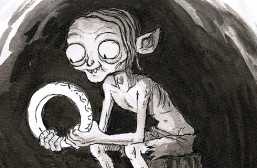


I think some people understand the appeal of “whump,” while others don’t. Explaining it to someone who doesn’t get it can be hard without sounding strange. Personally, I’ve always liked seeing characters face challenges and suffering, even though I didn’t know there was a term for it for a long time.
It’s tricky to tell someone that you enjoy seeing a character in pain because you like them. For me, there’s also a bit of a sexual element to it. I only enjoy it when it involves characters I find attractive, and it gives me a weirdly pleasurable feeling.
What I really like about it is that it shows characters in a more human light – with their quirks, strengths, flaws, vulnerability, and limits. When a character is pushed to their limits, physically or mentally, it reveals who they truly are and how well they can bounce back after being completely broken. Whumping takes characters out of their comfort zone, allowing for a deeper exploration of their personalities.
I see myself as someone who has experienced a lot of pain and challenges in life, and maybe that’s why I feel I’m good at expressing raw emotions in my writing. I’ve been through a lot, so I understand. In real life, I’m nurturing and protective, especially towards friends and family. When I write about characters facing hardship, it’s like I’m being protective and loving, breaking them down to help them rise again – better and stronger than before.
Well, same on the sexual appeal. No one wants to admit it but sometimes that’s just how it is lol
For me, it’s not so much about the pain, but what happens afterward between the person going through a tough time (“whumpee”) and the one taking care of them. I like the warm and comforting feelings, known as fluff, that come after. It’s not really about anything sexual; it’s more about closeness and intimacy.
I think this is something I’ve missed, not from my parents but from friends. When I was really young, I had some close friends, but we moved away, and I haven’t found that same warm feeling in the friendships I’ve made since then. Maybe that’s why I’m drawn to the comforting part of whump, seeking out the hurt and comfort.
I agree with that fuzzy feeling of fluff that is almost essential to the end of every whump fic and that reflects on how I also lacked that sense of intimacy growing up.
I just want to say that I understand that feeling and I hope that one day you get to experience that intimacy and closeness with someone be it romantic or platonic.
I’m not really into whump, but I’ve been a big fan of hurt/comfort since childhood, long before I even knew the term. Childhood emotional neglect and abuse definitely contributed to my interest in it.
I prefer gentle whump and hurt/comfort because I get squeamish about gore and injuries. The most I’ve made a character go through in my recent stories was a concussion. So, for me, it has to be low-risk and everyday situations.
Great article. I mostly like the comfort part. I have a lot of issues with anxiety and it’s something that’s always helped me feel calm and safe. Reading and writing hurt/comfort has really helped me through a lot of things.
I appreciate the explanation and history of the term! Personally I’m in it for the exploration of the characters’ psyche, whether it be through the pain or the recovery, and also the psyche of the person on the other side of either can also be fun to explore. Also I enjoy reading about how people react to vulnerability in others ans seeing what direction they take it.
I only recently learned the term whump. I like it! Always nice to have a little hurt/comfort, and whump being heavy on the hurt makes the comfort more rewarding.
My girlfriend likes whump, and she’s very shy about it. I want to be a part of it but I don’t know how to, like, act it out.
I want some new whump i dont really care for the injury i just love the comfort but for such a huge fandom why is the content so small.
My favourite whump of recent years is Jaime Lannister of GOT!
I read alot of whump fanfiction!
I’m a bit of an odd duck when it comes to whump–I like whump and hurt/comfort but I hate the woobification of characters. I feel that it strips away a lot of what makes a character interesting or strong and instead only makes them a crybaby who can’t at all fend for themselves. But that’s just me.
I personally feel like the whole thing about first torture then rescue is just a cheap writing trick to create easy drama. If it organically occurs in a story it can be fantastic however a lot of times in fanfic it’s just a fast way to create hollow drama.
Good job! I’m something of an “unintentional” whump writer, meaning it’s not all I do and I don’t write a story seeking to do whump with it, but I loooove a good safe for work whump scene. In my case, it’s because I have an inner caretaker who wants to play. I love writing the recovery, the moment when the whumpee gets their strength and confidence back. Glad to see this made the lineup, and glad to help with the revisions!
I enjoy it, but if a story is longer than one chapter, I don’t want it to be all about whump. Having a whump scene or chapter in an action story is great. I like both whump and hurt/comfort. It feels a bit strange because I don’t have any personal experiences that connect me to it. If anything, because I’ve never gone through anything like that, I wonder how I would survive if faced with such challenges. It makes a character seem stronger to me when they endure difficult situations. I only like it when it happens to powerful characters, or at least characters who are brave and defiant, even if they’re not physically strong.
I really like it when characters seem more like regular people with their own fears, needs, and limits. It makes me want to protect them. But I don’t enjoy reading about real abuse most of the time. I prefer it when the suffering is either something they bring on themselves or just something that happens.
I love it so much. Hurt/comfort is the best.
I’ve been active in the whump community for two years now, and even with the changes it’s gone through, this is still an enlightening article to read! thank you for posting it.
This is so interesting I had now idea the word whump even existed.
I’ve got an unhealthy obsession with whumping my characters, I think I have a problem. (but it’s just so dang guuud)
Whumpable. My favorite term of the year.
My brain will always whump the everloving meatspiral out of Merlin.
I like (well written) whump. I’m scared pissless of certain people finding out though, because without the context it could so easily be twisted to make a whump-fan seem like a horrible person, and trying to explain “well see, the context–” probably won’t exactly make it sound any better.
At the risk of sounding sexist, I think nurturing is just a common feminine trait, and whump is popular with women for the same reason three-ways are popular fantasies with men. Most guys would never really want to cheat on their wife or girlfriend, but there is still that tiny little natural urge to spread one’s seed, hence three-way fantasies. Most women definitely don’t want to see anyone get tortured, but there is that little part in the back of your mind that wants to take care of tortured hotties.
The greatest irony of whump is that in real life, the people most in need of being saved or cared for are often, if not usually, not very physically attractive or charming or cute looking. IMO that is why caregivers, doctors, etc. are some of the biggest heroes of our society; they handle the real-life whump that the rest of us don’t have the stomach for.
I LOVE to Whump the characters I love in a fandom such as Keith ( both VLD & DoTU) Rick Grimes in The Walking Dead, Jayce in Jayce and the Wheeled Warriors, etc.
I like whump because it allows to you to explore the characters emotions (more intense than introspection) and resistance (a more emotional badassary) in general the woobie tends to be someone that is consistantly underestermated so it shows other characters that this person has hidden depths that they have never noticed or forgotten thus whump tends to explore intercharecter relations and give the woobie a reminder that these people do actually appreciate you (since everyone tends to be emotionally constipated in some way) So tender eye opening and affectionate scenes happen and the fits end with a brighter more aware future or the emotional constipation strikes back and (in general this stays) canon tends to stick. My fav woobie tend to be those charectors that are generally sidelined for various reasons despite how bamf or vital they are/can be in background cannon/fannon I.e. cerebral over physical or youth over age (not necessarily experience) like Stiles stilinski. Peter parker. Charles xavier. Merlin. Tony stark etc.
Shiro from Voltron = Woobie.
I enjoy whump, although I find that it’s typically when placed on the more “powerful” characters, even if it is more of a rare occurrence. I find the appeal in seeing a different side to the more strong characters and seeing them be more emotional then the typically are. I just like that with that type of whump fic you can see a different side to a strong characters and perhaps a different side to a supporting character.
I love reading and watching whump cause most of the time when being in the fandom the characters that are being whumped are characters who don’t show that much emotion. When they are whumped though we get to see how the characters interact with that character and the character being whump shows their emotion.
I get Whump. I like the drama, and yeah, I think it brings out a nurturing instinct.
I’ve never heard of whump! Thank you for educating me! 😉
I used to think whump was like Hurt/Comfort, but with hardly any comfort, if at all.
Whump has always felt more like a vibe than a strict genre to me. Yeah, it’s all about pain and stuff, but it’s kinda like emotional torture on screen, and sometimes it ends happily. It’s like someone saying, “I want to see this person totally broken, and I’m bringing you along to soak in their misery.” Whump can show up in different ways, including child abuse and other stuff. If you’re using whump as a tag to tell readers it’s a heavy story, go for it. But I’d also throw in specific warnings when needed to give folks a better heads-up about what’s coming.
I just want to be sad. Make me sad about fictional people so I stop being sad about everything else.
Sadly, I relate to this.
I’ve managed to make it through 30 years of fandom without ever hearing/seeing the term Whump, somehow.
I like whump but it’s depends on how the fanfic its written.
Never heard the term until today. But I can see the possible appeal. It’s like when guys get sick and become extra needy; it’s annoying but also kind of cute to see them so vulnerable.
I neither like nor dislike whump.
I wouldn’t say that I’m a “fan” of whump itself, but my preferred fic really depends on my mood or the day I’m having. Some pairings and characters really seem more suited for this genre (ex. Joker in DCU or Oswald Cobblepot in Gotham specifically ). I think the appeal, for me, is in seeing the vulnerability of certain characters who try so hard to hide their pain and weakness (Dean). For me, whump isn’t a sexual thing. It’s more of a thing I use to express/relieve my symptoms of depression and anxiety. In a way, the comfort that comes to the character after is comforting to me as well, but first I have to feel the emotion and pain of a character. It’s very strange in a psychological sense but whump is certainly a journey worth taking if you’re up for the darker things. Tags are important!
As an editor to this article, I’m really happy to read it on the site! It made me learn about something new and gave me something to potentially check out!
I like the comfort part, not the injury or sickness itself. I think it’s cute when characters have to rely on each other.
Aspects of dr who are slightly whumy.
I’m a fan of whump because I can relate to it.